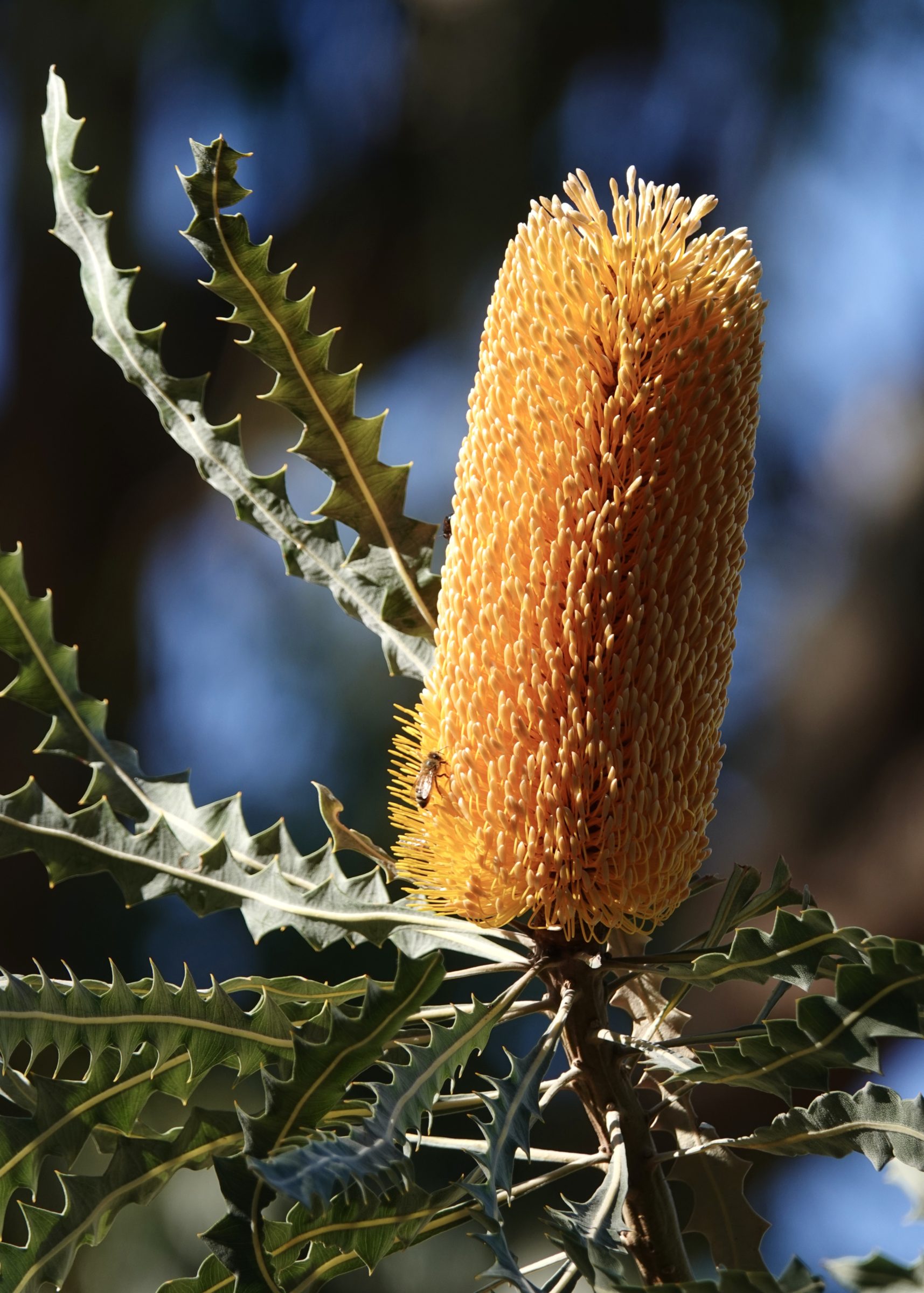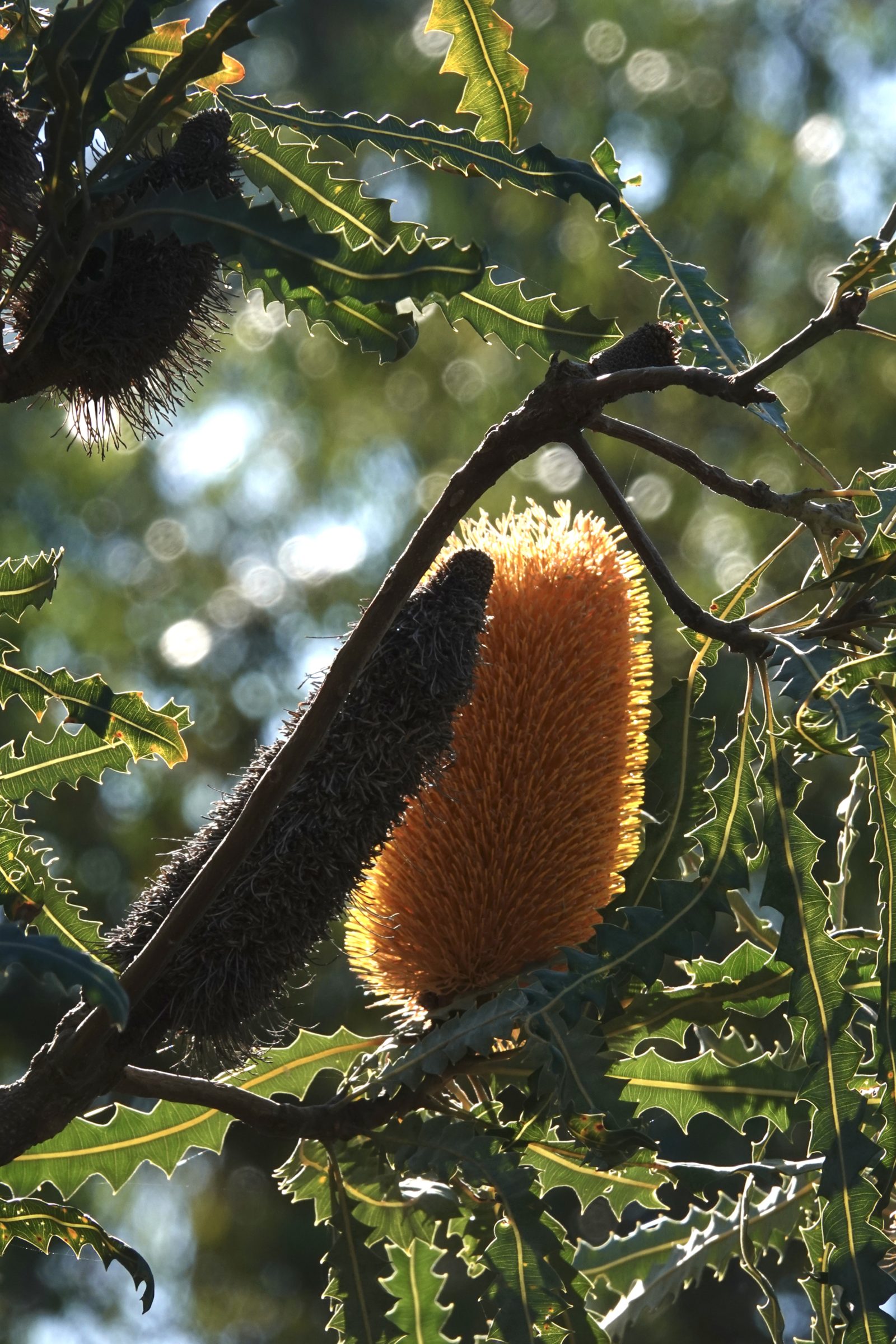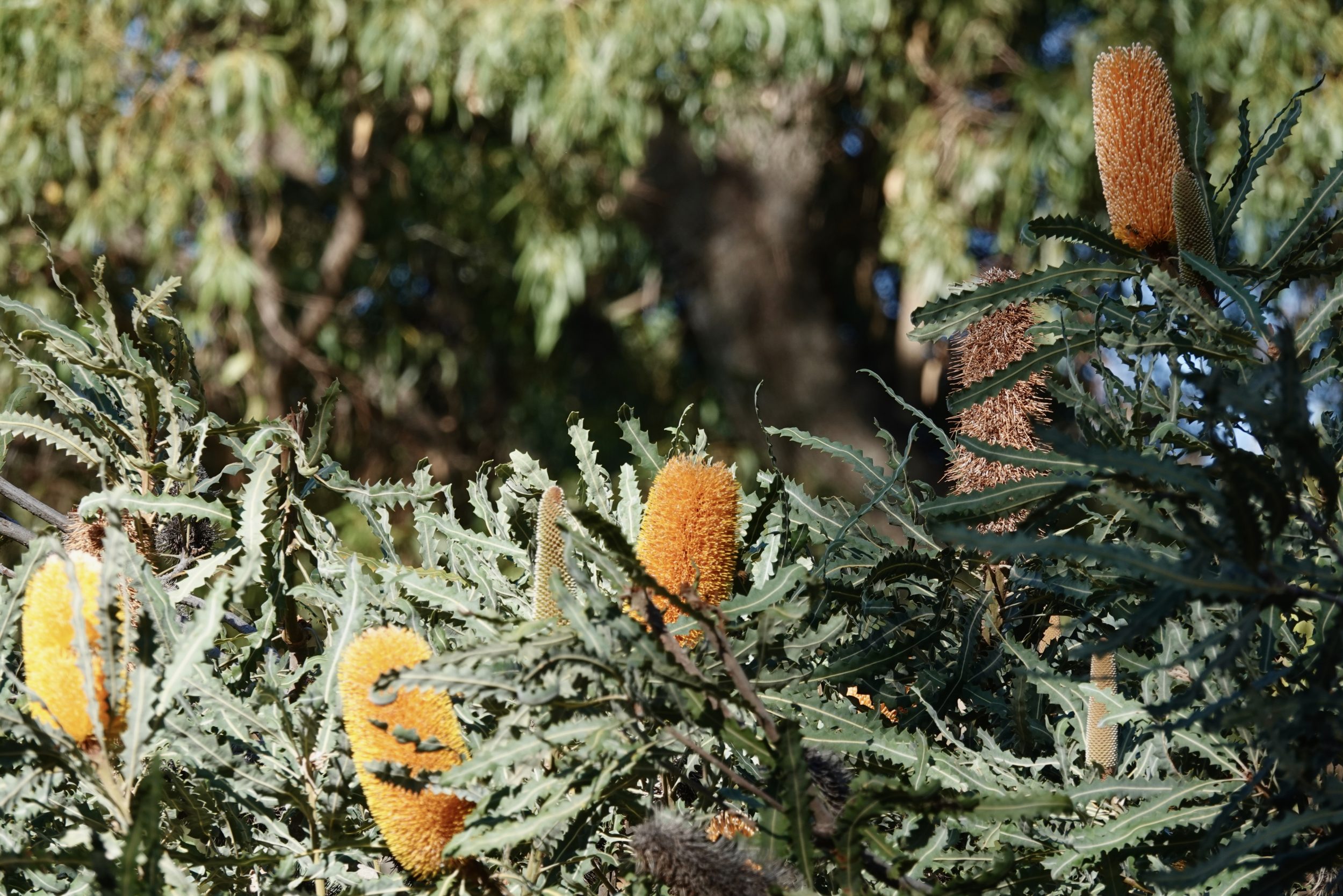This post, the two recent Boab posts, and two future posts are all fruits of the afternoon of the same day – 20.05.21.
Southwestern Australia’s Spring flowering is indeed one of the world’s most astonishing and beautiful natural phenomena, and Kings Park in Spring is guaranteed to leave any Northern Hemisphere resident’s jaws agape.
It is, however, a BIG mistake to pay attention in Spring, only.
In southwest WA generally, and Kings Park specifically, you can easily see some extraordinary endemic species, in full bloom, at any time; Kings Park’s Banksia Garden never disappoints.
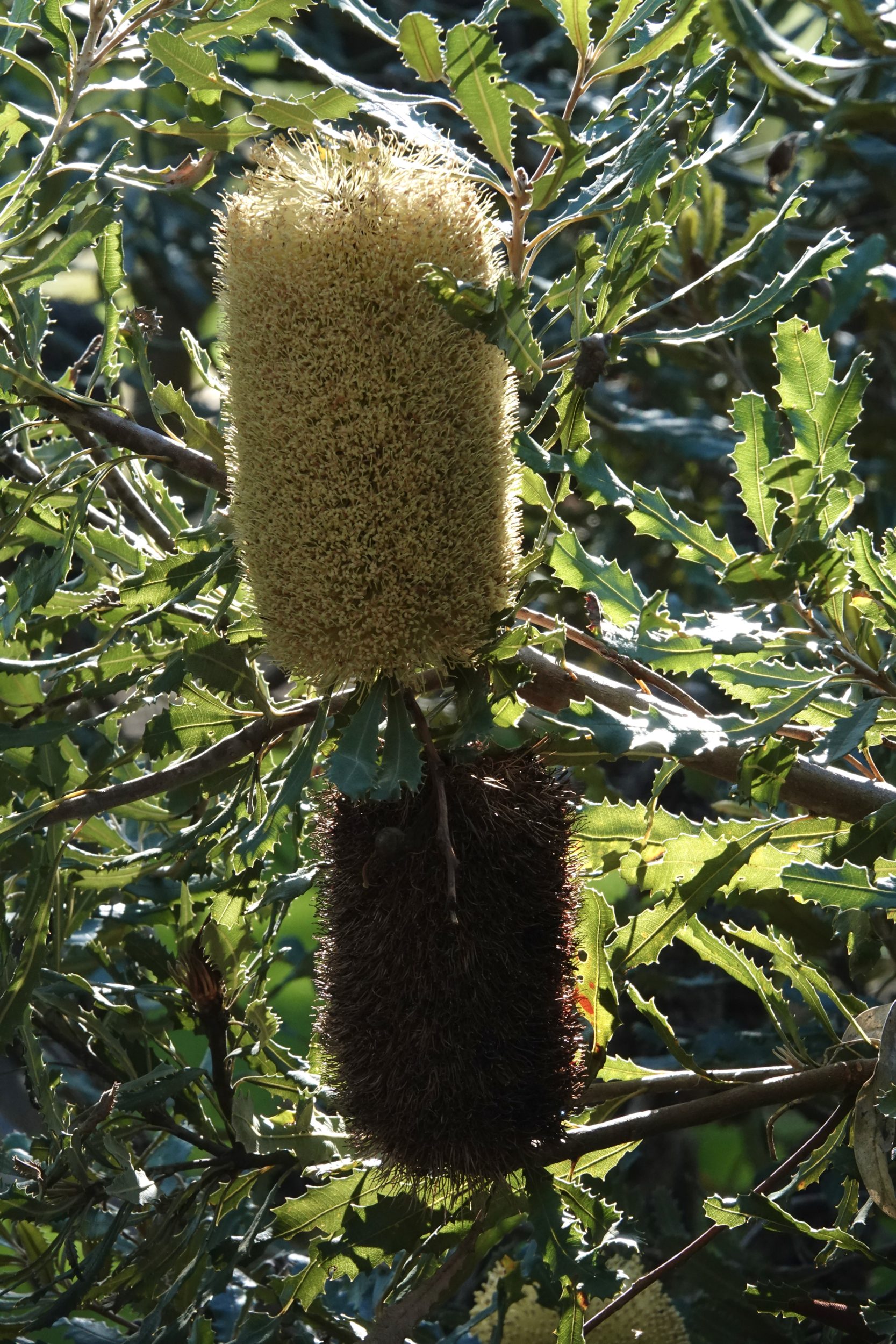
The above photo shows an “active” and a “spent” flower spike.
One of many things I love about Banksias is how – within even the branches of a single individual – flower spikes can look so utterly unlike.
Some are exquisitely neat, symmetrical, brilliantly colourful.
Others are seemingly-shambolic, extravagantly shaggy/untidy, monochrome.
Each “spike”/ “cone” in bloom is not one flower, but an assembly of many – typically hundreds, but sometimes fewer than one hundred.
A single Banksia grandis spike may have six thousand flowers!
Depending on which is “your” side in an ongoing “classification war”, there are 79 known species of Banksia…or, this genus within the Proteaceae family now has around 170 known species.
The much bigger number is the one cited by those who maintain that Dryandras should now be regarded as a subset within the Banksia genus.
Whichever side is “yours”, for Banksia enthusiasts the best side of Australia is its southwestern corner.
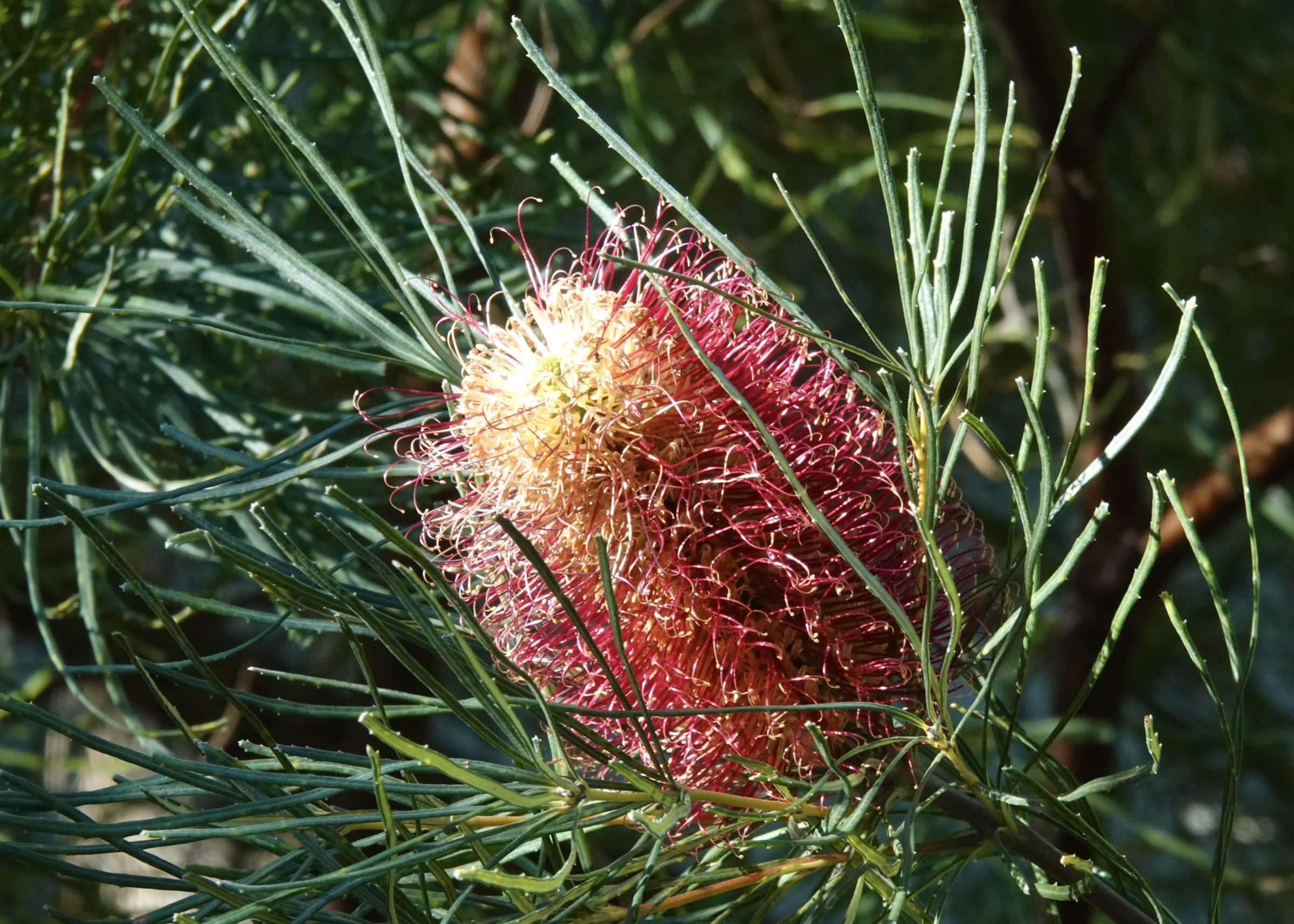
The overwhelming majority of Banksia species – 61 of the 79 – naturally occur only in various parts of Western Australia’s southwest.
Banksia-wise, the other ninety-something percent of Australia is very much “the poor relation”.
This makes Banksias’ name deliciously ironic, albeit sadly still-appropriate.
Many 17th century Dutch seafarers must have seen Banksias on Australia’s western side, but they paid them no attention.
The genus is named after Sir Joseph Banks.
In 1770, with James Cook on Australia’s east coast, Banks was the first European to notice, collect and celebrate these extraordinary plants.
If you want to know much more about Banksias – not just botanically, and “in the wild”, but also how to grow them in gardens, and how Australian artists have treated Banksias – there is one particularly well-informed, well-illustrated book.
Its authors favour the “79 species” side of the classification argument.
Kevin Collins, Kathy Collins & Alex George lovingly detail all 79 in the second edition of their Banksias.
Click here to purchase it from Kings Park.
For a briefer “170 species” overview, click this.
I think – underline “think”, and I am happy to be corrected – that Banksia Ashbyi is the species common to the “featured” image atop this post and the two images below.
